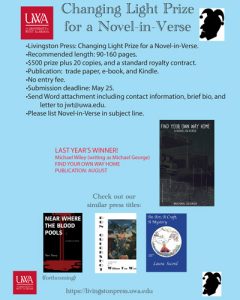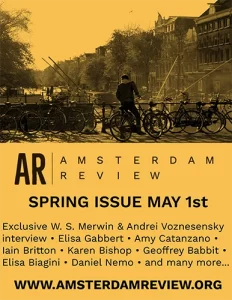Inventing the Real
The logic behind the 2×2 series, published by the Feminist Press, goes something like this: selected works by two authors (one male, one female) dealing with a similar theme or subject are juxtaposed in a single book. The blurb on the back of the jacket puts it this way: “Love. Death. Conflict. Civilization and its discontents. Do women and men tackle these enduring themes differently? [2×2] matches short works by great women and men writers and lets you be the judge.”
The logic behind the 2×2 series, published by the Feminist Press, goes something like this: selected works by two authors (one male, one female) dealing with a similar theme or subject are juxtaposed in a single book. The blurb on the back of the jacket puts it this way: “Love. Death. Conflict. Civilization and its discontents. Do women and men tackle these enduring themes differently? [2×2] matches short works by great women and men writers and lets you be the judge.”
Other books in the series situate Robert Nichols in the same volume as Nobel Prize winner Grace Paley, Tillie Olsen alongside Leo Tolstoy, and Willa Cather with Gustave Flaubert. This elegant and insightful series of little books could easily function as mandatory reading in a college course on women’s studies or comparative literature. The newest 2×2 installment matches Edith Wharton with “the Master” Henry James.
Wharton’s “The Old Maid,” takes place in the old New York of 1830’s, an era where “a few families ruled, in simplicity and affluence.” The Ralstons are such a family. Delia Ralston’s cousin, Charlotte Lovell, is about to marry into the Ralston family. However, Delia learns the truth about Charlotte’s frequent visits to a group of orphans in the stables: one of the “orphans” is Charlotte’s own child. Delia vows to keep Charlotte’s secret, but in a decisive move she convinces her cousin that the only way to keep her child is to not marry into the Ralston family.
This subtle, psychological short story (though at just under 100 pages it could be a novella), is a splendid representation of Wharton’s penchant for dramatic irony. In spite of the story’s somewhat slow beginning, where Wharton meticulously makes every effort to draw out the intricacies of social expectations of that class and time period, the author never allows the tension to slacken, and as the story progresses it quickly becomes drum-tight as Delia learns to live with her choice to fall in line with society’s expectations, while Charlotte must cope with being an old maid because she once went against the grain.
In Henry James’s “The Real Thing,” an artist needs models for a novel that he is illustrating. His regulars include a cockney girl and an Italian, both from the lower class, both extremely versatile as models, able to convincingly pose as urchins and aristocrats. The artist is confronted by real aristocrats (the aptly surnamed Monarchs) who are down on their luck and need extra money, so he agrees to pay them as models. The Monarchs believe they will be perfect models for nobles and royalty because they are “the real thing.” However, when they pose they are stiff and unconvincing. The lower class models make better aristocrats than the aristocrats themselves.
This story, like most of James’s works, begs to be read and reread. It is a story about class structure and how the artist can’t bring himself to see the aristocrats as equals. But it is also a story about the nature of reality, how humans construct it, and whether being a noble is more important than being able to look like a noble.
The two stories in Inventing the Real are linked by their investigations of reality: how individuals construct it – how it constructs individuals. Wharton and James both spent much of their career writing fiction that tackled issues concerning “cultured” society, they both frequently discussed social expectations, they both enjoyed employing dramatic irony, they were both expatriates, and they influenced each other’s work, so it is only natural that we read them side by side. In her introduction to Inventing the Real, Mary Ann Caws tells us that “Edith Wharton and Henry James met first in Venice in the late 1880’s, when she was in her late twenties and he in his forties. They were American writers who could not have known that they were to be paired and compared, if not during their lifetimes, then long afterward.”
Though the authors are perhaps best known for more famous works (James for The Ambassadors and “Daisy Miller”, Wharton for House of Mirth and her Pulitzer Prize winning Age of Innocence), Inventing the Real pairs more obscure stories together, both of which are sketches of later, more successful works.
That is not to say that “The Old Maid” and “The Real Thing” are inferior stories to their overall, respective bodies of work. On the contrary, they are every bit as skillful and nuanced as the best of their works, but until now they have bafflingly resided off the beaten path. Hats off to The Feminist Press for reissuing these often overlooked masterpieces.





